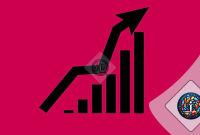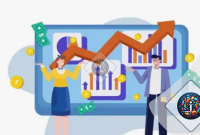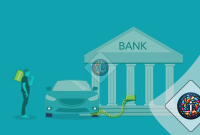Quick Loans: A Comprehensive Guide
In today’s fast-paced world, unexpected financial needs can arise at any moment. Whether it’s a sudden medical bill, an urgent car repair, or simply bridging the gap between paychecks, quick loans offer a potential solution. This comprehensive guide aims to provide you with a thorough understanding of quick loans, exploring their various types, benefits, risks, and how to make informed decisions when considering this financial tool.
What Are Quick Loans?
Quick loans, also known as fast loans or short-term loans, are designed to provide borrowers with immediate access to funds. They are characterized by their relatively short repayment terms, often ranging from a few weeks to a few months, and their streamlined application process. Unlike traditional bank loans, which may require extensive documentation and lengthy approval times, quick loans typically offer a faster turnaround, making them an attractive option for individuals facing urgent financial situations.
Key Features of Quick Loans
Several features distinguish quick loans from other types of financing:
- Speed: The primary advantage of quick loans is the speed at which funds are disbursed. Many lenders offer same-day or next-day funding.
- Accessibility: Quick loans are often more accessible to individuals with less-than-perfect credit histories compared to traditional loans.
- Convenience: The application process is typically online and straightforward, requiring minimal documentation.
- Short Repayment Terms: Quick loans have short repayment terms, usually ranging from a few weeks to a few months.
- Smaller Loan Amounts: The loan amounts are generally smaller compared to personal loans or other forms of financing.
Types of Quick Loans
The term “quick loans” encompasses a variety of loan products, each with its own set of characteristics and suitability for different financial needs. Understanding the different types of quick loans is crucial for choosing the right option for your specific situation.
Payday Loans
Payday loans are short-term, high-interest loans designed to be repaid on the borrower’s next payday. These loans are typically for small amounts and are intended to cover immediate expenses. Payday loans are often the most expensive form of quick loan due to their high interest rates and fees. It is crucial to understand the terms and conditions carefully before taking out a payday loan, as failure to repay on time can lead to a cycle of debt.
Key Characteristics of Payday Loans:
- Short Repayment Period: Usually due within 2-4 weeks.
- High Interest Rates and Fees: Can have APRs exceeding 300%.
- Small Loan Amounts: Typically range from $100 to $500.
- Easy Application Process: Often requires minimal documentation.
Installment Loans
Installment loans are repaid in fixed monthly installments over a specified period. Unlike payday loans, installment loans have longer repayment terms and lower interest rates, making them a more manageable option for some borrowers. These loans can be used for various purposes, such as debt consolidation, home repairs, or unexpected expenses.
Key Characteristics of Installment Loans:
- Fixed Monthly Payments: Borrowers make regular, predictable payments.
- Longer Repayment Terms: Can range from a few months to several years.
- Lower Interest Rates: Generally lower than payday loans, but still higher than traditional loans.
- Larger Loan Amounts: Can range from $500 to several thousand dollars.
Line of Credit
A line of credit allows borrowers to access funds up to a certain credit limit. Borrowers only pay interest on the amount they borrow, and the credit line is replenished as they repay the outstanding balance. This can be a flexible option for individuals who anticipate needing access to funds on an ongoing basis.
Key Characteristics of a Line of Credit:
- Revolving Credit: Funds are available as needed, up to the credit limit.
- Interest on Borrowed Amount: Interest is only charged on the outstanding balance.
- Flexible Repayment Options: Minimum payments are required, but borrowers can pay more to reduce the principal balance.
- Variable Interest Rates: Interest rates may fluctuate based on market conditions.
Title Loans
Title loans are secured loans that require borrowers to use their vehicle as collateral. The loan amount is typically based on the value of the vehicle, and the lender holds the title until the loan is repaid. Title loans can be risky, as borrowers risk losing their vehicle if they are unable to repay the loan. These loans often come with high interest rates and fees.
Key Characteristics of Title Loans:
- Secured Loan: Vehicle serves as collateral.
- High Interest Rates: Can have very high APRs.
- Risk of Vehicle Repossession: Failure to repay can result in the loss of the vehicle.
- Short Repayment Terms: Usually range from 15 to 30 days.
The Application Process for Quick Loans
The application process for quick loans is typically straightforward and can often be completed online. While the specific requirements may vary depending on the lender, here are the general steps involved:
Step 1: Research and Compare Lenders
Before applying for a quick loan, it’s essential to research and compare different lenders. Look for lenders with competitive interest rates, transparent fees, and favorable repayment terms. Check online reviews and ratings to gauge the lender’s reputation and customer service.
Step 2: Gather Required Documentation
Most lenders will require certain documentation to verify your identity, income, and address. Common documents include:
- Government-Issued ID: Driver’s license, passport, or other identification.
- Proof of Income: Pay stubs, bank statements, or tax returns.
- Proof of Address: Utility bill, lease agreement, or bank statement.
- Bank Account Information: Routing number and account number for direct deposit.
Step 3: Complete the Application Form
Fill out the online application form accurately and completely. Provide all the requested information, including your personal details, employment history, and financial information. Double-check the application for any errors or omissions before submitting it.
Step 4: Loan Approval and Funding
Once you submit your application, the lender will review it and may perform a credit check. If approved, you will receive a loan offer outlining the loan amount, interest rate, fees, and repayment terms. Carefully review the loan offer before accepting it. If you agree to the terms, you can sign the loan agreement electronically. The funds will typically be deposited into your bank account within a few hours or the next business day.
Factors to Consider Before Taking Out a Quick Loan
While quick loans can provide a solution to immediate financial needs, it’s crucial to carefully consider the potential risks and benefits before making a decision. Here are some important factors to consider:
Interest Rates and Fees
Quick loans often come with high interest rates and fees compared to traditional loans. Before accepting a loan offer, carefully review the Annual Percentage Rate (APR), which includes the interest rate and any additional fees. Compare the APRs of different lenders to find the most affordable option. Also, be aware of any potential late payment fees or prepayment penalties.
Repayment Terms
Understand the repayment terms of the loan, including the due dates, payment amounts, and any penalties for late payments. Make sure you can comfortably afford the monthly payments and repay the loan on time. Failure to repay the loan on time can result in late fees, damage to your credit score, and potential legal action.
Loan Amount
Only borrow the amount of money you need to cover your immediate expenses. Avoid borrowing more than you can afford to repay, as this can lead to a cycle of debt. Consider alternative options, such as negotiating with creditors or seeking assistance from nonprofit organizations, before taking out a loan.
Credit Score Impact
Quick loans can impact your credit score, both positively and negatively. If you make timely payments, it can help improve your credit score. However, late payments or defaults can significantly damage your credit score. Lenders may also perform a credit check when you apply for a quick loan, which can temporarily lower your credit score.
Lender Reputation
Choose a reputable lender with a proven track record of providing fair and transparent loan terms. Check online reviews and ratings to gauge the lender’s reputation and customer service. Be wary of lenders who offer guaranteed approval or require upfront fees, as these may be signs of predatory lending practices.
The Risks of Quick Loans
While quick loans can be a helpful solution in certain situations, it’s essential to be aware of the potential risks involved. These risks include:
High Interest Rates and Fees
As previously mentioned, quick loans often come with high interest rates and fees, making them an expensive form of borrowing. The APR on a payday loan, for example, can exceed 300%, which can quickly lead to a cycle of debt if you are unable to repay the loan on time.
Debt Cycle
The short repayment terms and high interest rates of quick loans can make it difficult for borrowers to repay the loan in full, leading to a cycle of debt. Many borrowers end up taking out new loans to cover existing debts, further compounding their financial problems.
Negative Impact on Credit Score
Late payments or defaults on quick loans can negatively impact your credit score, making it more difficult to obtain credit in the future. A damaged credit score can also affect your ability to rent an apartment, get a job, or obtain insurance.
Predatory Lending Practices
Some lenders engage in predatory lending practices, charging exorbitant interest rates and fees, and taking advantage of borrowers who are in desperate financial situations. Be wary of lenders who offer guaranteed approval or require upfront fees, as these may be signs of predatory lending practices.
Legal Consequences
Failure to repay a quick loan can result in legal action, such as wage garnishment or lawsuits. Lenders may also report the default to credit bureaus, further damaging your credit score.
Alternatives to Quick Loans
Before resorting to a quick loan, consider exploring alternative options that may be more affordable and sustainable. These alternatives include:
Personal Loans
Personal loans offer lower interest rates and longer repayment terms compared to quick loans. If you have a good credit score, you may be able to qualify for a personal loan from a bank or credit union.
Credit Cards
Credit cards can provide a convenient way to cover unexpected expenses. If you have a credit card with a low interest rate, you can use it to make purchases and repay the balance over time.
Borrowing from Friends or Family
Borrowing from friends or family can be a less expensive option than taking out a quick loan. Negotiate the terms of the loan and make sure to repay it on time to avoid damaging your relationships.
Negotiating with Creditors
If you are struggling to pay your bills, consider negotiating with your creditors to lower your interest rates or extend your payment deadlines. Many creditors are willing to work with borrowers who are facing financial difficulties.
Seeking Assistance from Nonprofit Organizations
Nonprofit organizations can provide financial counseling and assistance to individuals who are struggling to manage their debt. These organizations can help you create a budget, negotiate with creditors, and find resources to improve your financial situation.
Payment Plans
Many hospitals, utility companies, and other service providers are willing to work out payment plans with customers who are struggling to pay their bills. A payment plan allows you to spread out your payments over a longer period, making them more manageable.
Tips for Managing Quick Loans Responsibly
If you decide to take out a quick loan, it’s crucial to manage it responsibly to avoid falling into a cycle of debt. Here are some tips for managing quick loans responsibly:
Create a Budget
Create a budget to track your income and expenses. This will help you identify areas where you can cut back on spending and save money to repay your loan on time.
Prioritize Repayments
Make repaying your quick loan a top priority. Set up automatic payments to ensure that you never miss a due date.
Avoid Borrowing More Than You Need
Only borrow the amount of money you need to cover your immediate expenses. Avoid borrowing more than you can afford to repay.
Explore Alternative Solutions
If you are struggling to repay your quick loan, explore alternative solutions such as negotiating with creditors or seeking assistance from nonprofit organizations.
Refinance if Possible
If you are eligible, consider refinancing your quick loan with a personal loan or credit card that offers a lower interest rate.
The Future of Quick Loans
The quick loan industry is constantly evolving, with new technologies and regulations shaping its future. Some trends to watch include:
Increased Regulation
Regulators are increasingly scrutinizing the quick loan industry to protect consumers from predatory lending practices. New regulations may include stricter lending standards, caps on interest rates and fees, and increased transparency requirements.
Technological Advancements
Technological advancements are making it easier for borrowers to apply for and receive quick loans online. Artificial intelligence (AI) and machine learning are being used to automate the loan approval process and improve risk assessment.
Alternative Credit Scoring
Lenders are increasingly using alternative credit scoring models to assess the creditworthiness of borrowers who may not have a traditional credit history. These models consider factors such as bank account activity, utility bill payments, and mobile phone usage.
Focus on Financial Wellness
Some quick loan providers are shifting their focus from simply providing loans to helping borrowers improve their overall financial wellness. These providers offer financial education resources, budgeting tools, and debt management programs.
Conclusion
Quick loans can provide a valuable solution for individuals facing urgent financial needs. However, it is essential to understand the different types of quick loans, the associated risks, and the alternatives available before making a decision. By carefully considering your options and managing your loan responsibly, you can use quick loans to address your immediate financial needs without falling into a cycle of debt.
Remember to always research lenders, compare interest rates and fees, and read the fine print before signing a loan agreement. If you are struggling with debt, seek assistance from a nonprofit organization or a financial advisor. Making informed decisions and managing your finances responsibly are key to achieving long-term financial stability.
Disclaimer
This article is intended for informational purposes only and does not constitute financial advice. Consult with a qualified financial advisor before making any financial decisions. The information provided in this article is based on general knowledge and may not be applicable to your specific circumstances. The author and publisher are not liable for any losses or damages resulting from the use of this information.





